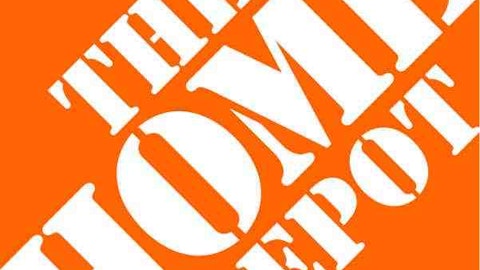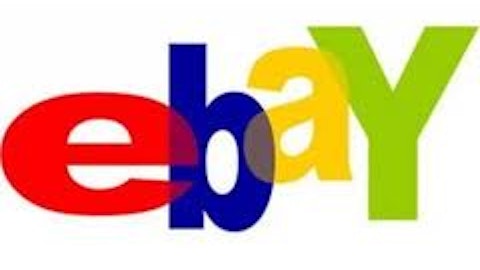The turnaround story at electronics retailer Best Buy Co., Inc. (NYSE:BBY) is one of the most compelling in recent history. Just eight short months ago there was talk of a possible bankruptcy as cash reserves dwindled and profits sank. New CEO Hubert Joly had a plan, but investors weren’t buying it.
Then things started to get better. Costs were cut. Prices were made more competitive. Online sales began to climb. The stock, after reaching a low of $11.20 per share in December, surged to $30 per share by August of this year. The analyst upgrades rolled in.
I’ve written about Best Buy Co., Inc. (NYSE:BBY) extensively in the past, and I bought the stock on four different occasions last year, including when shares sold for just $11.85 in November. Pessimism had driven the stock to such absurd levels that it was hard not to add to my position. Each quarter the company makes progress in achieving the goals set by Joly in his Renew Blue strategy, and each quarter I become more confident in the future of the company. On Aug. 20 the second quarter results continued this trend.

Stabilizing the business
In the second quarter of last year comparable store sales fell by 3.3%, a disturbing result that needed to be corrected. Thankfully, in the second quarter of this year things have dramatically improved. Comparable store sales did fall by 0.6% overall, with a 0.4% decline in the domestic segment and a 1.8% decline in the international segment. But online sales surged by 10.5% year-over-year as the company has put a strong focus on improving its online channel.
These numbers are actually on the low side, however, due to two different factors. First, disruptions caused by installing both the Samsung Experience Shops and the Windows Stores within Best Buy Co., Inc. (NYSE:BBY) locations were the main culprit of the comparable sales decline. In the earnings press release, Joly states that excluding the impact of these disruptions comparable store sales were flat to slightly positive. This is an enormous improvement from last year.
The second factor has to do with online sales. Pre-orders for the new gaming consoles set to be released this holiday season are not recognized as revenue until the product is actually shipped, meaning that the 10.5% increase in online sales actually understates the real growth. Including these pre-orders, online sales increase by 16%, faster than the 14.2% increase last year.
Total revenue declined slightly, but cost savings drove earnings well above analyst estimates. Non-GAAP operating margin rose to 2.2% from 1.9% in the same quarter last year, and gross margin fell by far less than was expected given Best Buy Co., Inc. (NYSE:BBY)’s aggressive price matching policy.
One extremely encouraging sign is that comparable store sales for the television category were flat. For many years TVs were a real profit center for Best Buy Co., Inc. (NYSE:BBY), but as LCD screens became commoditized prices began to fall and profits dried up. When everyone already has a giant LCD TV, it gets harder to maintain growth.
More cost savings
One of the key parts of the Renew Blue strategy is cost cutting, and Best Buy Co., Inc. (NYSE:BBY) delivered in the second quarter. Prior to the second quarter the company had achieved $325 million in annual savings out of a stated goal of $725 million, and now another $65 million in cost savings can be added to that total. Much of these savings are administrative, such as a series of lay-offs earlier this year, but there are also significant savings created by optimizing the inventory management system.
Another way the company saved money during the quarter was by replacing a 6.75% bond with a new 5% bond. Based on the $500 million principal this should lead to about $9 million in annual savings. Although small, every bit counts.
Turning weakness into strength
One of the most exciting initiatives Best Buy is implementing is the ability to ship online orders directly from stores. Previously, online orders were sourced from distribution centers, and Best Buy estimates that 2%-4% of online traffic does not convert because the product is out of stock. In these cases the product is often in stock at a nearby store, but the customer moves on to a competitor to make the purchase instead.
Best Buy is testing a new system, active in 50 stores now with plans to expand to 200 stores in time for the holidays, which allows online orders to be fulfilled from store inventory. The system first checks for the product at the distribution center, and if it’s not found the system then checks nearby stores. This should greatly reduce the instances of products being out of stock and lead to even stronger online sales growth. This program will effectively turn Best Buy stores into hundreds of distribution centers, turning what was perceived by many to be a weakness into a distinct advantage.
Taking it to Amazon
Online retailer Amazon.com, Inc. (NASDAQ:AMZN) had one big advantages over Best Buy in the past: until recently Amazon.com, Inc. (NASDAQ:AMZN) didn’t charge sales tax on purchases. This created a significant price advantage that Best Buy could not possibly overcome. However, Amazon.com, Inc. (NASDAQ:AMZN) now charges sales tax in ten states, including California, New York, and Texas, leveling the playing field in these large markets. This has allowed Best Buy to implement a price-matching policy that actually matches the after-tax price.
Showrooming was a big buzz word last year, but Best Buy Co., Inc. (NYSE:BBY) has been able to reduce the effects of the practice with this policy. One thing working to Best Buy’s advantage is that consumers like to hold gadgets like tablets and phones in their hands before purchasing, something that Amazon cannot facilitate. And with prices essentially the same, there is no real incentive to showroom any more.
Another advantage for Best Buy is its order online, ship to store program. This allows customers to pick up merchandise ordered online at their closest Best Buy location. If the item is already at the store then it can be picked up on the same day, trumping Amazon.com, Inc. (NASDAQ:AMZN)’s 2-day shipping time.
There have long been rumors that Amazon.com, Inc. (NASDAQ:AMZN) is preparing a same-day delivery system that would allow customers to receive items on the same day that they place the order. Logistically this is a huge challenge, but if Amazon can pull it off it takes away a key advantage of brick-and-mortar retail. Amazon is investing heavily in new distribution centers and working to make them more efficient, and I suspect that at some point in the future same-day delivery will be offered. The costs associated with a nationwide same-day delivery system will almost certainly be staggering, keeping Amazon.com, Inc. (NASDAQ:AMZN)’s profits in check, and eventually investors will stop giving the company a pass. But as the stock has proven thus far, eventually can be a long time.
The bottom line
Best Buy Co., Inc. (NYSE:BBY) is making steady progress toward creating a leaner company, as Joly has managed to stabilize the business and increase online sales considerably. The company still has over $300 million in annual costs left to cut, and we should see incremental progress next quarter. The Samsung and Microsoft mini-stores will be completed before the holiday season, so the disruptions during the second quarter won’t be repeated for that crucial period. The Renew Blue strategy is on track, and Best Buy is in great shape.
The article The Epic Turnaround at this Retailer Continues originally appeared on Fool.com and is written by Timothy Green.
Timothy Green owns shares of Best Buy. The Motley Fool recommends Amazon.com. The Motley Fool owns shares of Amazon.com.
Copyright © 1995 – 2013 The Motley Fool, LLC. All rights reserved. The Motley Fool has a disclosure policy.





